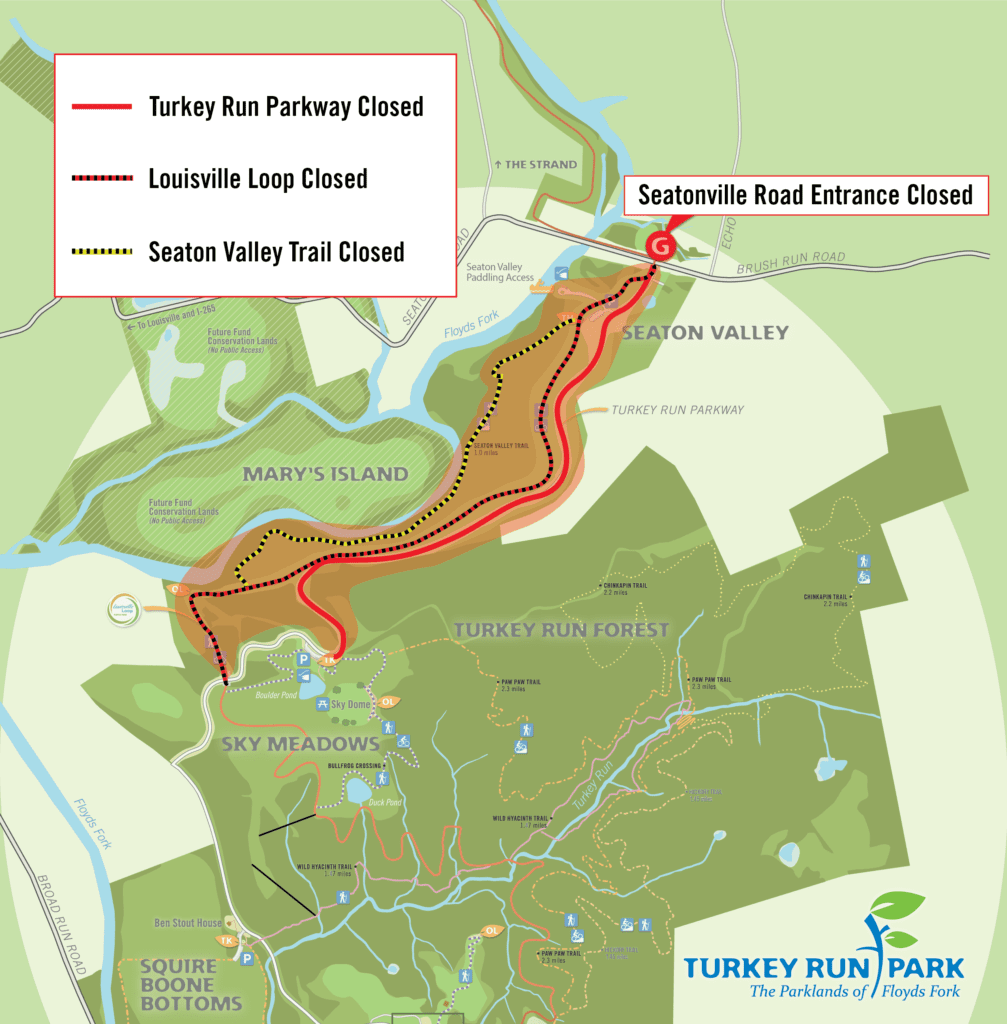Prescribed Burn Planned in Turkey Run Park
In the coming weeks, The Parklands will conduct a single-day prescribed (controlled) burn in the Seaton Valley meadow at Turkey Run Park to set back invasive plants, reduce wildfire risk, and improve meadow health.
Because prescribed burns depend on specific weather conditions, exact date cannot be determined in advance. The burn is planned to take place between November 17 and December 15, 2025. The date of the burn will be announced here as far in advance as possible.
We will make every effort to share any updates to the planned burn. This page will remain the most reliable source for the latest information about the event.
What to expect:
On the day of the burn, some sections of Turkey Run Park will be CLOSED TO THE PUBLIC, including:
- The northern (Seatonville Road) entrance to Turkey Run Park and Seaton Valley Trailhead
- A section of the main park road (Turkey Run Parkway) between Boulder Pond and the northern park entrance
- A section of the Louisville Loop (approximately mile marker 62.2–61.0)
- Seaton Valley Trail
![]()
Areas south of Seaton Valley, including the nearby Brown-Forman Silo Center, will remain open.
Visitors may notice some smoke, staff vehicles, as well as fire trucks in and around the closed area. Local fire authorities are already informed and will be on-site. The fire will be strategically started and put out as quickly as possible to reduce the amount of smoke and keep the closure time to a minimum. The area is expected to be closed for one day and will reopen promptly the next morning.
After the burn, you may notice some blackened fields in the affected area—this temporary change is a powerful step toward healthier, more vibrant meadows filled with native plants and pollinators next season.
To learn more about the purpose and planning of prescribed burns, read this recent blog from our resident Certified Burn Boss and Assistant Director of Natural Areas & Trails, Evan Cross: Prescribed Fire: Restoring Meadows at The Parklands
Scroll down for FAQ.

